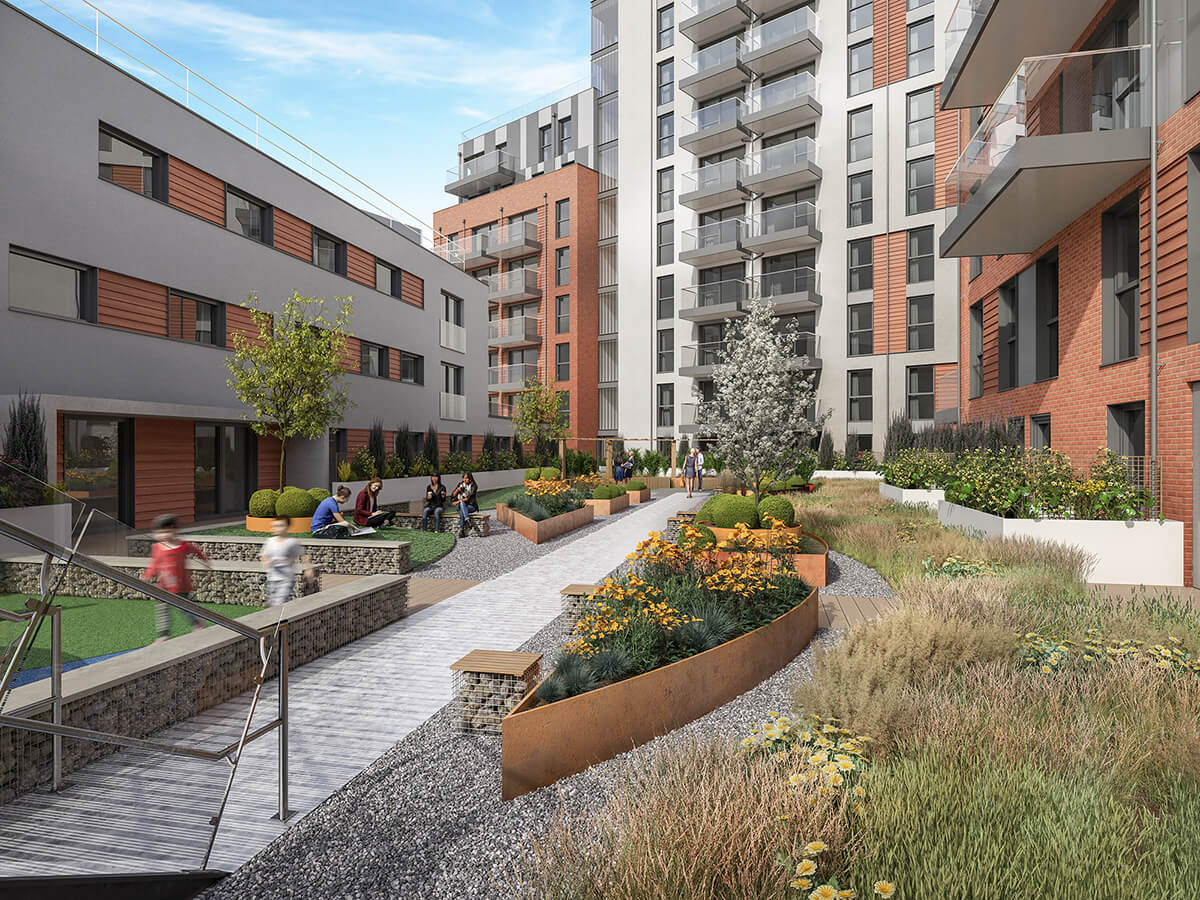The topic of roof gardens is the subject of much debate for many reasons. They bring enormous value to any environment, but are still seen as rather troublesome and potentially unduly expensive by many. In this blog article, we discuss some elements for consideration.
Roof gardens are often discussed during the initial design concepts, only to be side lined before the project begins. We know that green roofs add to our environment in a multitude of ways as outlined in a previous blog, apart from looking incredible in the midst of urban environments. In this article we’ll try to remove some of the mystery surrounding these projects by considering some of the technical elements of roof gardens.
Roof gardens, or green roofs, come in two varieties, intensive or extensive. An extensive green roof is typically not designed for general access or to be walked on. However, they provide the benefits such as water retention (which reduces the amount of rainwater entering our drainage systems), reduced solar reflection, a haven for wildlife and still delivers considerably psychological benefits.
An ‘extensive’ roof will provide a large area of low maintenance and low growing ground cover. They are typically designed with weight in mind and use thin layers of lightweight substrate and drainage and are likely to have wildflowers and sedum rather than perennials, shrubs and trees.
‘Intensive’ roofs are social spaces with walkways and seating areas designed to enable a more involved experience for residents or workers to enjoy the green environment.
A major consideration for intensive designs is the supporting podium weight and the locations and types of trees should be carefully considered in the planning phase. A small tree today will become substantially heavier as it grows, and this must be factored in accordingly.
A major element of ensuring that plants thrive is soil quality and depth. While sedum can grow in as little as 2.5cm of soil, Soil depth for shrubs in planters on intensive roofs should be a minimum of 30cms. Both low growing sedum and larger plants need to grow in the correct soil type and depth.. A key reason for plant failures is lack of oxygen and nutrition at the root level, and a combination of correct soil choice, appropriate aeration and the addition of sand, aggregates and soil conditioners and improvers will ensure enhanced nutrition, aeration and drainage.
Appropriate plant choice is crucial for not only aesthetics, but also for plant growth and survival. For example, at the elevated position, with higher wind levels and relatively shallow soil depths, drought conditions can occur. Trees and plants which enjoy living on cliffs are a good choice! Conversely, without adequate drainage soil can become waterlogged. Planting with this in mind is important in getting it right first time.
Wind levels effect more than the soil on roof gardens. Without professional installation, decking and paving can be lifted by the wind, creating both damage and a hazard. Trees are not immune and as they will not have the benefit of deep roots, root ball guying and sometimes canopy guying is used to prevent trees from being blown over or blown away altogether. Greater success for tree establishment has also been achieved with air potted trees and large shrubs. This new technique consists of a reusable plastic ‘sleeve’ which surrounds the root system. The ‘sleeve’, laid flat, resembles a honeycomb with holes. The holes are always positioned on the outside of the ‘container’ and this produces a more fibrous root system, because the surface does not allow root circling. Reusable wrap around air pots also means less plastic waste.
To achieve the best outcomes, it’s advised that structural engineers, architects and landscape architects are instructed so they can work collaboratively from an early stage. This ensures the correct podium specification which will support the weight of sufficient soil depth for a good variety of landscape elements. This will also take into account the environmental and aesthetic factors, as well as the concerns of developers such as initial costs and ongoing maintenance. You can see examples of projects completed by Natural Dimensions, including large roof gardens in collaboration with major architectural clients, by clicking here.
Ongoing research and new technical innovations are helping to make green roofs easier and more cost effective to install. Removeable trays make access to roof substructure more accessible, while specialist growing medium and lightweight soil retention features allow for less costly support structures.
The possibilities for more roof gardens are continuing to grow as they come within the means of more organisations and feature more prominently in the designs of architects.
As is common in many walks of life, getting the right people, with the right knowledge engaged at the right time, will play a major role in the ultimate success of your green roof project.We’re always interested in lively debate about all things roof gardens, landscape architecture and urban design, so feel free to get in touch

